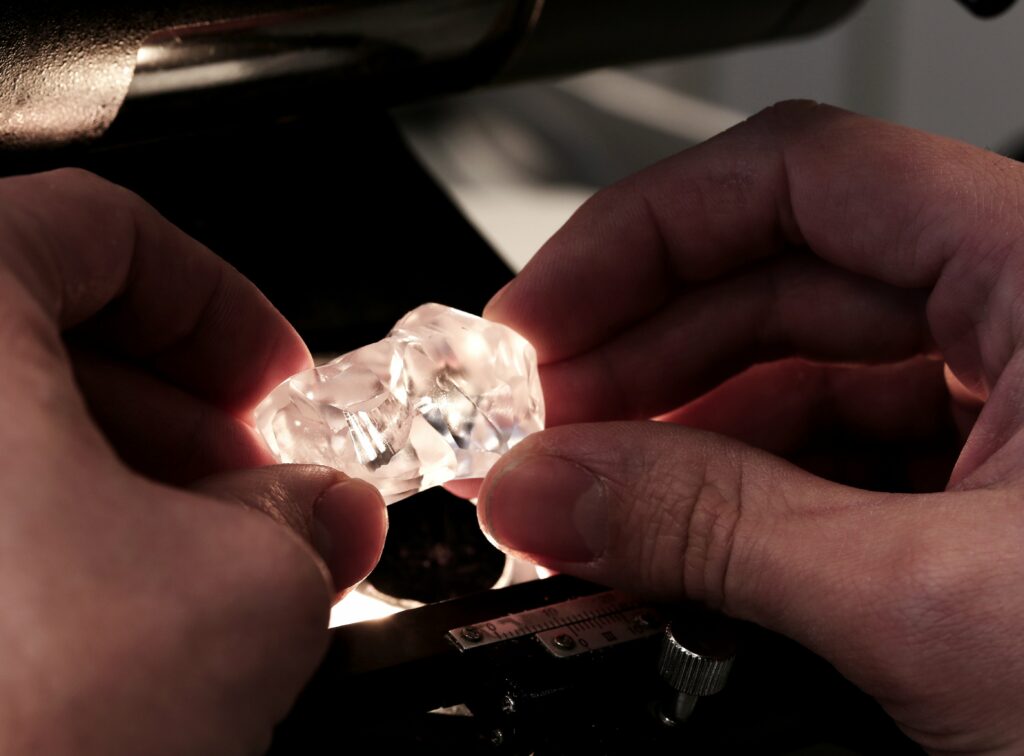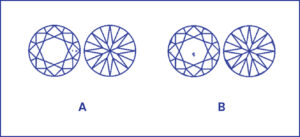Inclusions In Diamonds- The Most Misunderstood Components Of Diamonds?
Posted by Hari Krishna
November 18, 2022
Diamonds are one of the most precious gems found on Earth. They are often associated with brightness, royalty, luxury, and durability. But there is another aspect to diamonds- the inclusions and that is one of the most misunderstood components of a diamond.
Some might think it is a negative characteristic to have in your diamond but the truth is far from that.
This blog explores the characteristics of inclusions, different types of inclusions, best inclusions you can have in your diamond and what exactly are inclusions.
The small imperfections found in a diamond that are created due to the extreme heat and pressure they undergo during formation, are called inclusions.
Inclusions in a diamond are what birthmarks are for humans. But unlike humans, it is impossible to find a diamond without an inclusion. If you ever come across one, consider yourself lucky as that diamond would be incredibly rare.
These irregularities are what make a natural diamond unique. It is part of what makes the stone rare and precious.
Keep in mind that these inclusions are only visible to a skilled gemologist under 10X magnification.
They not only help graders to differentiate between natural and lab-grown diamonds but also helps in determining the quality of the diamond.

Bearding
These often occur while cutting the diamond in the form of hair-like lines extending from the girdle of the diamond into the surface. The fuzzy, fringe, and grey-looking appearance of the girdle look heavily bearded, almost like scratch marks.
Cavity
To completely remove the cavity inclusion, one has to sacrifice the weight of the diamond. Cavity inclusions are deep and large openings on the surface of a diamond.
Cavities are created mostly during the polishing process when the internal Inclusion gets dislodged, resulting in trapping dirt and oil, making it more visible.
Settling for higher weight at the expense of a lower grade of clarity is something that helps in keeping the value of the diamonds as heavier diamonds are usually high.
Cloud
The cluster of pinpoint inclusions very close to each other are cloud inclusions.
Bigger clouds tend to cause a hazy appearance resulting in the depreciation of light transmission properties.
Most of the time, they aren’t the concern as they are small and diffuse easily.
Chip
The name itself is quite suggestive. Shallow and small openings are found near the culet and girdle on the surface. These are man-made inclusions caused by accidental knocks or wear and tear.
Pinpoints
Only visible under 10x magnifications. These inclusions are well-embedded inside the diamonds in the form of white and black crystals.
Needle
If they appear in clusters, needle inclusions have a detrimental effect on diamond’s clarity, generally seen under 10x magnification. These inclusions are like long thin needle-shaped transparent, or white.
Graining
It is the irregular growth of crystals internally appearing hazy and milky. If severe, they may also look like creases and reflections.
Feather
Popularly known as a fracture in a diamond in layman’s terms. Feather inclusions are transparent and invisible to the naked eye. But, if it catches the light, it can showcase a white feather-like appearance.
If feathers reach the surface, it can cause serious durability issues. Also, unsightly coloration should be avoided.
Indented Natural
These are parts of rough diamonds that are left untouched during the polishing process found at the girdle. Indented Natural inclusions are arrears of rough diamonds surface dipping below the polished surface.
Crystal
These are the mineral crystals trapped inside diamonds during formation. They can be colorless(diamond within the diamond), black, greenish, reddish, etc.
Due to their visibility to naked eyes, these are generally undesirable.
Twinning Wisps
Mixtures of different inclusions such as crystals, feathers, pinpoint, and clouds form a disorderly pattern that is created during the diamonds’ growth process through thousands of years.
Knot
Raised areas on the facets of diamonds like transparent and white crystals reaching the surface of the diamonds.
Diamonds treasure inclusions and should we. Small imperfections and irregularities are present in all natural diamonds and that is a mark of beauty. Every diamond is meant to be unique and these inclusions are an integral part of a sparkling and rare diamond.
You should not reject a diamond just because it has an inclusion since they are bound to have it. However, there are few types of inclusions you should avoid like indented, natural, chip, cavity and knot.
At the same time, there are a few inclusions that are good to have and it is nothing negative.
Microscopic inclusions or slightly inclusive inclusions can be overlooked as they are not so visible to the naked eye.
Inclusions such as pinpoint, feathers, and needles are negligible or the best inclusions to have in your diamonds on the condition that they should only appear under 10x magnification. All of these are either transparent or primarily white.
Statistically, only 2-3% are flawless diamonds of the purest quality as most of them have inclusions. Despite that, the diamonds with the least inclusions are the most valuable and have a high valuation.
Let’s understand with this example

Here you have two diamonds with the same grading result: equal carat weight, clarity, color grade, and the same cut. But the value of both these diamonds varies highly just because of the placement of inclusions.
The value of Diamond A is higher than Diamond B because the inclusion on this diamond is almost invisible, whereas the Inclusion on Diamond B is right at the center.
Natural resources are unprocessed and pure. Diamonds are a gift formed in nature over years and years. That is why they are bound to have marks of their million year journey.
Having gone through the process of formation, sourcing, shaping and polishing, they form inclusions and that is a normal and obvious characteristic.
At Hari Krishna Exports, we believe that the true beauty of nature is reflected in a natural diamond and we celebrate everything that makes it unique. We are passionate about the art and craftsmanship of making a diamond.
We have the highest standards of quality control in our manufacturing process and only the best diamonds reach our customers.
Ethically sourced and responsibly managed, our natural diamonds range from 0.18 to 50+ carats.
Sign up to our newsletter here and to receive the latest updates about the diamond industry, sustainability practices and more.